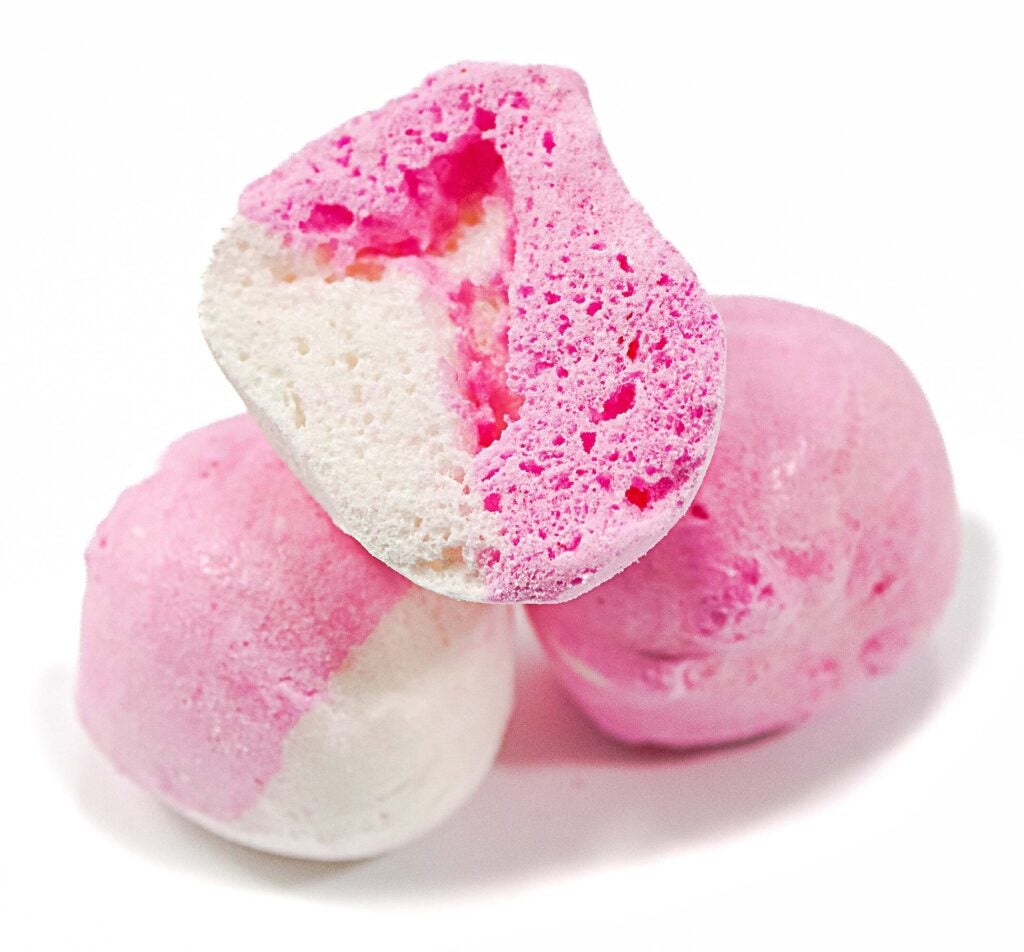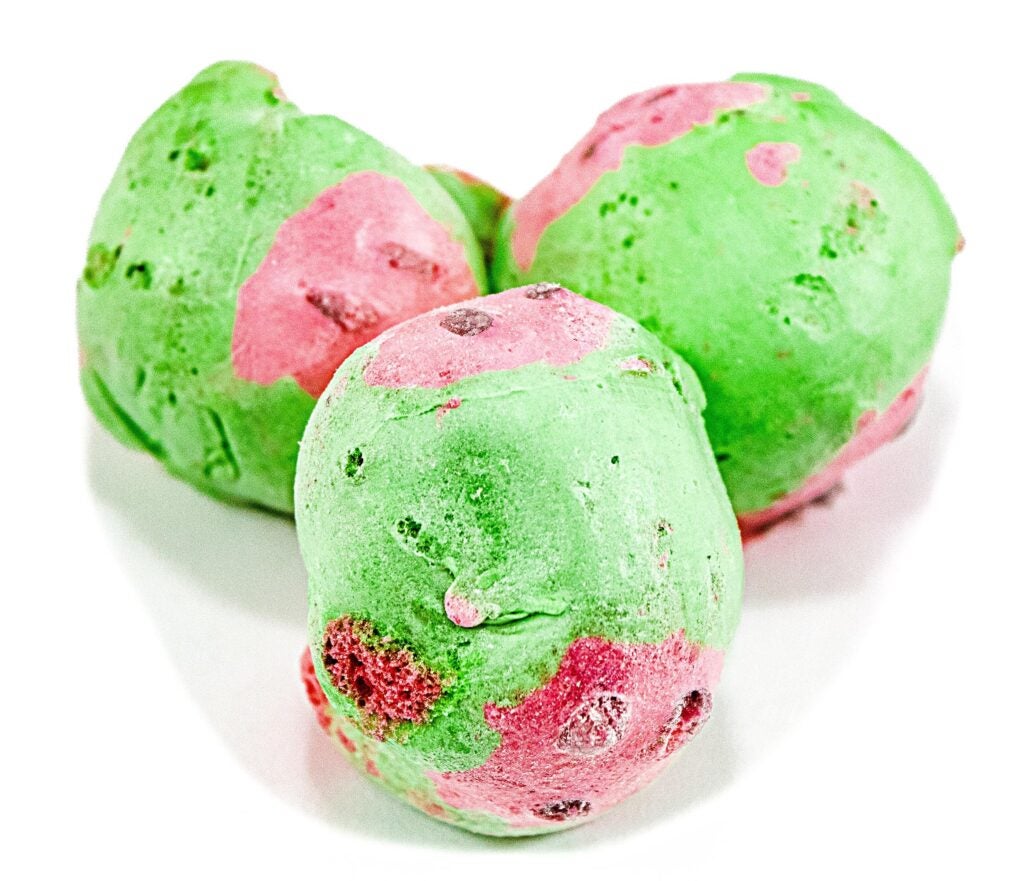At nine years old, a summer family trip to the Kennedy Space Center in Florida introduced me to many wonders of the world, like the Apollo 11 Moon landing and the rovers on Mars, but none was more impactful than astronaut ice cream. It was a shiny, rectangular block of sugar stationed at the gift shop, a prize for traveling to Pluto and back, marked by a classic Neapolitan triad of vanilla, chocolate, and strawberry—only dry and powdery instead of cold and creamy.
Harder than cotton candy but comparable in lightness, the astronaut ice cream kept me entertained as we left the space center. It had a familiar taste but a texture I’d never encountered before: brittle, almost petrified instead of icy, and easily snapped into little cubes. A soft-but-crisp bite instantly melted in my mouth, filling it with an intense sweetness that contrasted against the light, faint smell of vanilla emitted when I first opened the package. Soon enough, the sugary powder crumbled into the bag and onto the car floor.
Modern freeze-drying was invented after World War II to preserve and store foods without refrigeration. While dehydration uses warm air to reduce a food’s moisture content to 5 to 20 percent while forever altering its shape, freeze-drying removes 98 percent of water, which retains the appearance, nutrients, and flavor of the food. As important in space food as it is on Earth, self-sufficient homesteaders and end-of-world preppers use this process to make foods like produce, protein, and dairy easily storable and shelf-stable for up to 25 years. But lately, freeze-drying is picking up steam online as the next generation’s version of astronaut ice cream: freeze-dried candy.

Freeze-drying gives nostalgic candies a whole new look. Chewy becomes crispy. Hard becomes light and airy. Gummy worms expand, doubling in size to become what can only be described as neon packing peanuts, with a crisp crunch that’s perfect for ASMR videos. The candy coating of Skittles crack as the inside expands. Taffy that would usually stick to your teeth crumbles into powder with every bite.
Freeze-drying candy may not have been invented during the COVID pandemic, but the exponential growth in interest was definitely cultivated during that time. A simple search on Etsy yields more than five thousand listings offering freeze-dried candy. Small candy businesses like Tastely Box and Trendy Treats are finding viral fame by showcasing the process on TikTok, where freeze-dry videos can rack up over 18 million views. The appeal is part anticipation and part enticement, waiting for the candy to come out of the freeze dryer, vibrant and puffed up.
Freeze-drying gives nostalgic candies a whole new look. Chewy becomes crispy. Hard becomes light and airy.
“Freeze-dried candy is a novelty item, and its uniqueness, along with its texture, is what has made it so popular,” Melinna Gonzalez, COO of Trendy Treats, shares. The freeze-dried candy company launched in the summer of 2020 and quickly began creating TikTok “before and after” videos showcasing the making of their candy. Each post averages several hundred thousand views. Gonzalez says the videos often intrigue new customers, inspiring them to try the transformed versions of their favorite candies while encouraging repeat customers to sample new flavors.

While Gen Z might be the early adopters of this trend, North Coast Candy Co. cofounder David Hellmer says the majority of his returning customers are part of an older demographic finding a new way to enjoy their favorite hard candies without risking broken teeth. “The kids are coming to this candy because it’s new and hot, but those who are in their 30s and older are coming back to it because, despite it being a little more expensive than regular candy, it’s a way to have the candy that they may have given up in the past due to their teeth,” he says, claiming that 80 percent of the candy market is hard or chewy. After all, the average American adult has at least three dental fillings.
A four-ounce bag of Skittles at your local convenience store can’t cost more than a couple dollars, but a four-ounce bag of freeze-dried Skittles can start at $5 and cost as much as $10. Despite the high markup in price, since establishing the company in 2020, Hellner has seen 400 percent growth year over year. Based on North Coast Candy Co.’s current production level, he’s betting that freeze-dried candy is here to stay.
Astronaut ice cream never actually reached space. Rumor has it that the crumbs could’ve been hazardous in zero gravity—or perhaps the astronauts simply preferred the real thing, which they were able to enjoy during orbit. Still, I’d like to think that its creation, along with a little curiosity, evolved into freeze-dried candy as we know it today. Who knows? Perhaps requesting your favorite gummy at the convenience store will soon come with a new age-old question: “Regular or freeze-dried?”
3 Freeze-Dried Candy Stores to Shop and Follow:
-
North Coast Candy Co.
Based in Ohio, North Coast Candy Co., established by longtime homesteaders and inspired by TikTok, freeze-dries everything from marshmallow Peeps to saltwater taffy. You can buy directly from their site, or from Economy Candy on the Lower East Side if you’re in New York! -
Trendy Treats (TikTok)
With 1.6 million followers and 51.7 million total likes, Trendy Treats is best known for their wild experiments, like freeze-drying bubble tea and Jell-O, and their fast-paced editing as they make the very candy they stock on their site. -
Tastely Box (TikTok)
Canadian candy shop Tastely Box sells hard-to-find candy from around the world, like Oreo candy canes and Hershey’s Sugar Cookie candy bars. Their best sellers are still their freeze-dried candy selection that they make themselves.